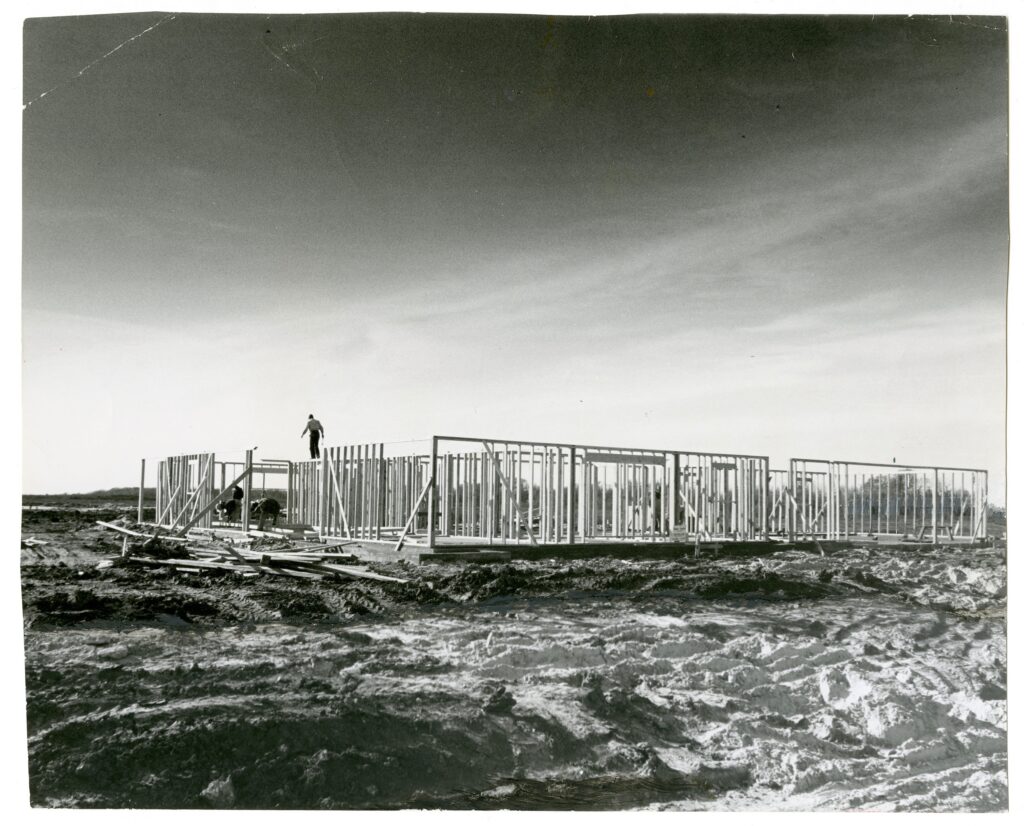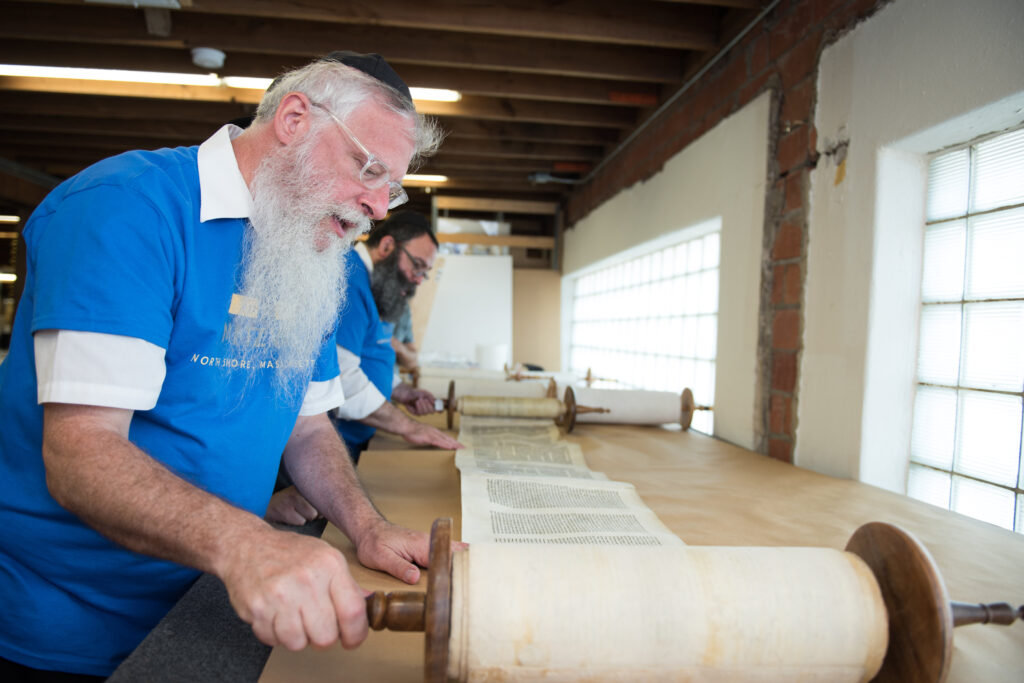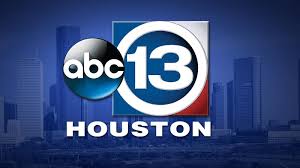By Anna Mayzenberg

Meyerland grew rapidly from its beginnings in 1955. Homes, such as this one on Valkeith Drive (1960), frequently sold before construction was completed.
Photo courtesy of the Houston Metropolitan Research Center, Houston Public Library.
In the mid-1950s, the 1,200-acre Meyerland subdivision promised to be a new suburban haven for middle- and upper-class Houstonians. The popular ranch-style houses and neighborhood amenities quickly attracted residents from other parts of Houston, and they started buying homes before construction even began. Houston’s Jewish community, which dates to the 1840s, had previously relocated multiple times before settling down in Meyerland, with synagogues migrating to the new neighborhood along with their congregants, creating a place to call home.
Meyerland was not a disaster-prone area when buyers first purchased houses there in 1955. When the flooding began, many residents had been there for nearly thirty years. Hydrologists and engineers told them that, because Houston expanded so quickly and without regulation in the 1970s and 1980s, the consequences, namely water runoff and constant flooding, were theirs to bear. While some neighbors left over time, the Jewish community — now approximately 14 percent of Meyerland’s population — had firmly established itself in the area.

Rabbi Avrohom Litvin of Kentucky (left) and Rabbi Yossi Serebryanski of Colorado examine Torah scrolls rescued from the chapel of Seven Acres, a local Jewish assisted living facility. They are two of fifty Chabad rabbis who volunteered to assist with the relief effort in Houston after Hurricane Harvey. Photo courtesy of Chabad of Texas Archive.
The recovery process went beyond simply handing out money and mucking out people’s homes. University of Houston professor Irving Rothman, z”l, mentioned the need to recover scrolls of the Torah with the Five Books of Moses, “Members of our congregation went in waist deep and carried them out in plastic bags and took them to their houses.” Not everything could be saved, of course. “But there are thousands of thousands of books,” he continued. “You’re not allowed to burn Jewish books, so there’s a large, large … grave, dug outside of the synagogue in an earthen work. All the books that were flooded were … buried [there]. Because a book is a live thing. You don’t burn it, you bury it.” The commitment to Judaism and the community stands out in these stories; Jews will risk their lives to tread through murky waters and salvage the texts that guide them, and they will respect those left behind.
Click here to read the full article or click on Buy Magazines to purchase a print copy or subscribe.

Click here to watch KHOU footage of Meyerland residents elevating their homes after Harvey flooded the neighborhood.

Watch this ABC News time-lapse video of flooding at the Jewish Community Center during Harvery.
For more information on Evelyn Rubenstein Jewish Community Center, click here.

 Follow
Follow